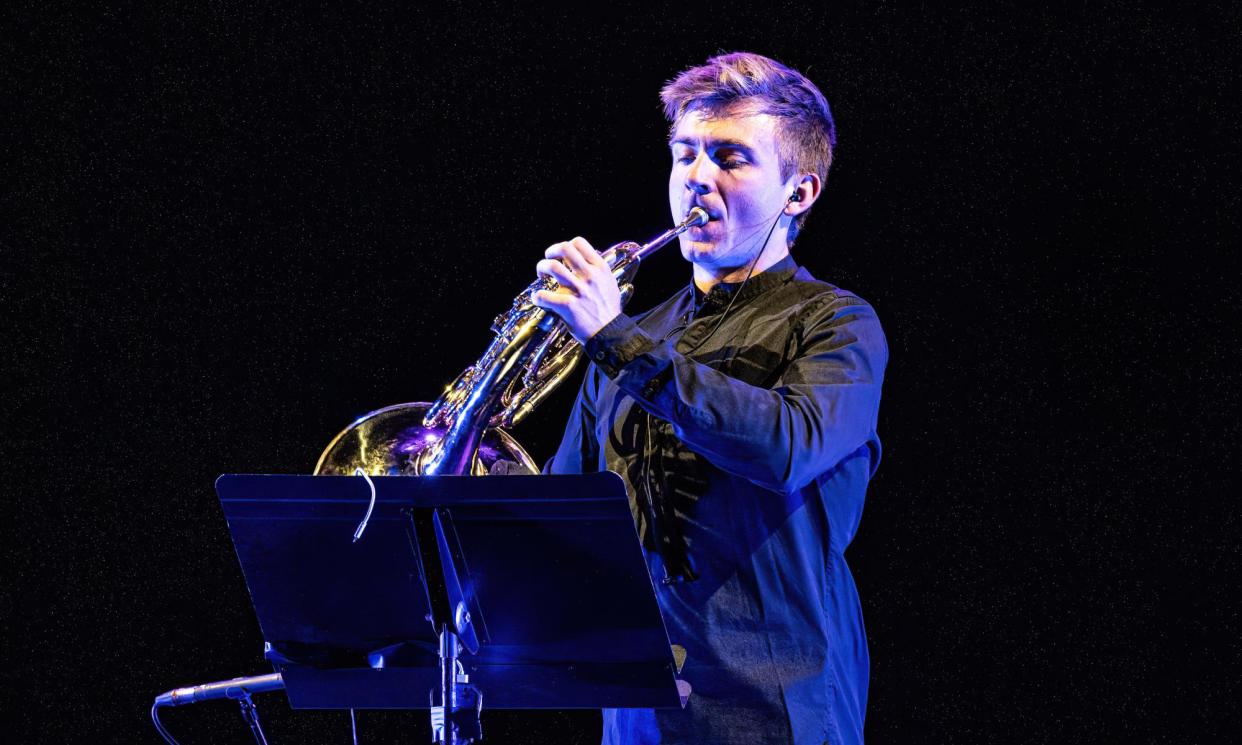Goldscheider/Dawson review – the horn is plenty

We’ve come a long way from the early days of electroacoustic music, when a ring-modulated piano or a flute or a violin dialoguing with electronic echoes of itself was often the height of technological sophistication. Even so, it still seems strange to find a solo horn as the focus of a concert featuring real-time electronics. But Ben Goldscheider spent his time during lockdown in 2020 looking into the possibilities of combining his instrument with live electronics, and he presented the results of his research in a recital with the “media artist” Philip Dawson, which featured the premieres of three specially commissioned works.
Goldscheider also included the work that had started him on his explorations, the 1979 Fantasie for horns by the German-born Canadian Hildegard Westerkamp, in which the solo horn has a taped accompaniment assembled from the sounds of many different horns, including fog, car and alp. The writing for the live instrument is entirely conventional, the tape background mostly continuum-like, until shortly before the end the horn embarks on a solo that seems to come straight out of a 19th-century German opera. Thea Musgrave’s Golden Echo III was Goldscheider’s multi-channel recreation of a piece originally composed in the 1980s for solo horn and 16 other horns on tape, which places the audience at the centre of a surround-sound celebration of brass sonorities.
None of the new works could match that kind of sonic luxury, although Alex Grover’s Single Form (Dawn), which he describes as a “slow-motion, sonic sunrise”, built up an impressively dense texture from the instrument’s harmonics. Zoë Martlew’s Nibiru places the soloist at the centre of a global apocalypse – the title comes from Babylonian mythology – with the horn pleading for humanity’s salvation, amid sounds drawn from a variety of cultures, and ending with the song of an extinct Hawaiian bird. And in Mark Simpson’s Darkness Moves II, inspired by the work of the artist-poet Henri Michaux and his experiments with mescaline, Goldscheider’s extraordinary virtuosity and the potential of the real-time electronics were fully exploited, and there was a true dialogue between the two. Simpson’s vivid, surreal musical gestures and their interactions with their digital transformations were spectacularly vivid, so that the piece acquired a theatrical dimension that was totally compelling.

 Yahoo News
Yahoo News 
